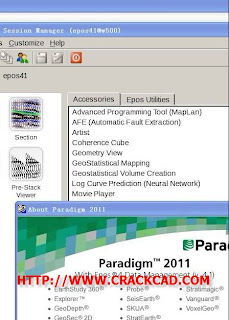he Paradigm 2011 release is the largest synchronized release of exploration, development and production technology in the company’s history. A result of years of research and development, the release carries the signature of innovation that the industry has come to expect from Paradigm™, with new, game-changing technologies that redefine workflows and best practices across the E&P chain. The release also expands Window® 7 platform support to Paradigm’s full interpretation suite. In addition to the introduction of a rich set of geoscience and engineering applications, this release enhances multi-disciplinary collaboration, enabled and strengthened by expanded data integration, an intuitive user interface, and a highly ergonomic design. The release introduces measurable product performance with the expanded use of multi-core (CPU and GPU) applications for seismic imaging, seismic attribute calculations, voxel interpretation and subsurface modeling. Productivity is enhanced with integration improvements and new workflows, such as interpretation with modeling, and new knowledge control and auditability solutions for multi-scenario management. Major technological advances in Paradigm 2011 include: • New “validation of interpretation data while modeling” workflows using true 3D paleo-flattening • Pre-stack and post-stack data in a common interpretation canvas • Multi-attribute interpretation with multi-well correlations and multi-well synthetics • Innovative multi-attribute volume, section and map blending • On-the-fly time-to-depth corrections from multiple velocity sources over multiple surveys • Crossplot and transparent traverse operations over multi-survey data • New voxel rendering technology (GPU enabled) for 8X performance improvements • New GPU-based modeling kernels for >6X performance • Regional multi-line 2D seismic facies classifications • Geologic and seismic interpretation views with production data • True 3D restoration and basin modeling • 3D model uncertainty capture • Multi-point geostatistics and proportional facies • Hybrid Windows and Linux deployment for all interpretation and modeling technologies
Software Paradise
Tutorials,Manual
Tutorials,Manual
 Software training,tutorials,download,torrent
Software training,tutorials,download,torrent